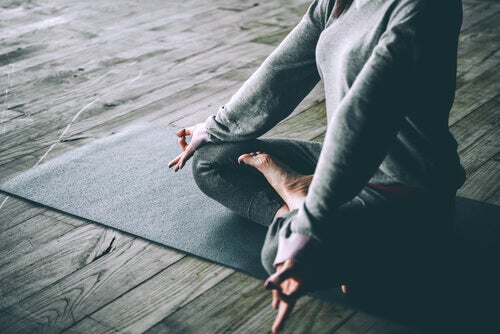The relationship between yoga and depression can be difficult to understand, especially since one of the main symptoms of this disorder is apathy for almost any type of activity, however, the practice of this discipline offers many benefits to people with depression.
After diagnosis of this disorder, a combination of psychological and pharmacological treatment is usually established, however, its high prevalence and possible side effects that may cause some antidepressants have led to a greater interest in complementary therapies, such as yoga.
- Depression is a mood disorder with mainly emotional symptoms.
- It is characterized by the presence of other cognitive and somatic changes.
- It is therefore an alteration whose involvement is both psychic and physical.
- Although it mainly influences the emotional sphere.
The biggest symptoms of depression, depending on the plan in which they appear, may include:
This disorder can vary depending on the intensity, frequency of appearance of symptoms and how it affects the social, professional or family environment of the patient, it can also be temporary or permanent and lead to partial or total disability.
As we see, a depressed person has some widespread effect on his or her body, which not only manifests itself in low self-esteem or chronic fatigue, but can even lead to suicide.
At the chemical level, this severe disorder alters various types of neurotransmitters (cells that help brain neurons communicate):
Now that we know how depression works, we’ll better understand the benefits of yoga for this disorder. His practice is much more than physical exercise, because it also involves a mental and spiritual state. In fact, does it come from the term? Anduj?what in Sanskrit means yoke or union: harmony between body, mind and spirit. Can you already feel the relationship between yoga and depression?
The practice of yoga helps us to get to know each other better, both mentally and physically, this allows us to explore the deepest places of our being, all through learning postures, breaths and mantras (sounds and words).
“My happiness is in me, it’s not there. Only I have the power at every moment. ?? Tantra Yoga?”
People are multidisciplinary. We are not only symptoms or thoughts, but the result of their interaction, this discipline teaches us to harmonize our ideas, our behaviors, our moods, our memory and our bodily systems, so that we can live in peace at a time when these dimensions connect with each other. Therefore, this organic balance is the point of union between yoga and depression.
At the chemical level, this practice originating in India stimulates the production of proteins, substances responsible for repairing neurons, which increases neuroplasticity, that is, the ability of our brain to form and modify neural connections based on the experiences we are experiencing.
Additionally, yoga regulates serotonin and dopamine levels, increases brain blood flow, and releases endorphins, all of which help improve mood naturally.
Different postures strengthen the musculoskeletal system, increase muscle flexibility and make them stronger, as well as ligaments, tendons and fascias.
The practice of yoga promotes a state of relaxation, allowing us to sleep better and deeper.
As we have said, the predominant symptoms of this disorder are affective, the good news is that yoga can act directly on them, decreases their intensity and therefore provides immediate effects.
Here are some of the reasons why yoga has become a global practice against depression and other types of disorders, so yoga and depression are closely related.
While, as we have seen, the benefits are many, caution should be exercised and not attributed solely to the improvement or healing of depression, this discipline cannot replace pharmacological or psychological treatments, yoga acts as a complement to both.

